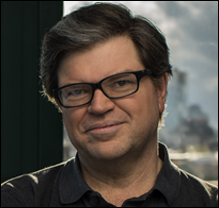
A.M. TURING AWARD WINNERS BY...
Yann LeCun

United States – 2018
Short Annotated Bibliography
- LeCun,Y, B.Boser, J. S. Denker, D. Henderson, R. E. Howard, W. Hubbard, L. D. Jackel. “Backpropagation applied to handwritten zip code recognition,” Neural Computation vol. 1, no. 4, December, 1989, pp. 541-551.
Written soon after LeCun’s arrival at Bell Labs, this paper describes the successful application by the Adaptive Systems Research department of the new back-propagation techniques developed by LeCun in his doctoral thesis and, independently, but his co-awardee Geoffrey Hinton. The zip code recognition described here was an early stage of the work later applied to automated check clearing. - LeCun, Y., L. Bottou, Y. Bengio, and P. Haffner (1998) “Gradient-based learning applied to document recognition,” Proceedings of the IEEE, vol. 86, pp. 2278–2324.
Describes the pathbreaking use of convolutional neural networks to handwriting by a Bell Labs group including LeCun’s co-awardee Yoshua Bengio. The paper introduced graph transformer networks, a new approach able to train networks composed of specialized modules. It uses Bell Labs’ successful check recognition system as its main example. - LeCun, Y., J. S. Denker, S. A. Solla. “Optimal Brain Damage,” Advances in Neural Information Processing Systems (NIPS) vol. 2, 1989, pp. 598-605.
LeCun worked with his Bell Labs colleagues to devise a method to simplify neural networks by removing unnecessary connections. Done properly, this “brain damage” could produce simpler, faster networks that performed as well or better than the full-size version. - Y. LeCun, Bengio, Y. and G. E. Hinton. “Deep Learning,” Nature, vol. 521, 2015 pp 436-444.
A recent and accessible summary of the methods that LeCun and his co-winners termed “deep learning,” because of their reliance on neural networks with multiple, specialized, layers of neurons between input and output nodes. It addressed a surge of interest in their work following the successful demonstration of these methods for object categorization, face identification, and speech recognition.




























 THE A.M. TURING AWARD
THE A.M. TURING AWARD